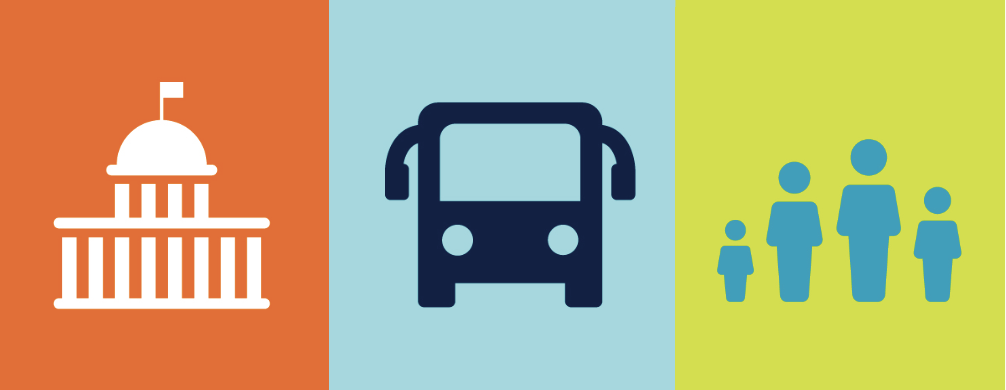New Report: Funding a Transit Transformation
This week marks the start of an exciting new era for public transit in the Twin Cities region, with wide-ranging benefits for all metro residents.
Thanks to a decade of advocacy from community members and our legislative champions, Minnesota made history in 2023 by passing arguably the most progressive transportation bill in the United States, with ongoing, dedicated funding for public transit that will provide hundreds of millions of dollars every year to create and maintain a system that is fast, frequent, and convenient for everyone in the region.
As the legislation’s 0.75¢ metro sales tax for public transit officially takes effect on October 1, a new report from Move Minnesota—“Funding a Transit Transformation”—details what this unprecedented, ongoing investment could mean for our transit service and communities.
Just months ago, Metro Transit faced a projected $150 million annual operating shortfall. Now, poised to receive upwards of $450 million annually in new, dedicated funding, Metro Transit’s secure financial footing is bucking the national trend and setting a new precedent for cities across the country. With bold leadership and strategic investments, these resources will change the lives of every metro resident—saving families money, supporting public health, and protecting our climate.
In our new report, we…
1. Outline a vision for the use of these new funds to create a world-class public transit system
With strategic implementation of this new, ongoing funding, our future can include 5-10 minute bus frequency, a complete bus rapid transit network, an electric bus fleet, better suburban service, plus well-resourced operations and maintenance to keep the whole system running smoothly.
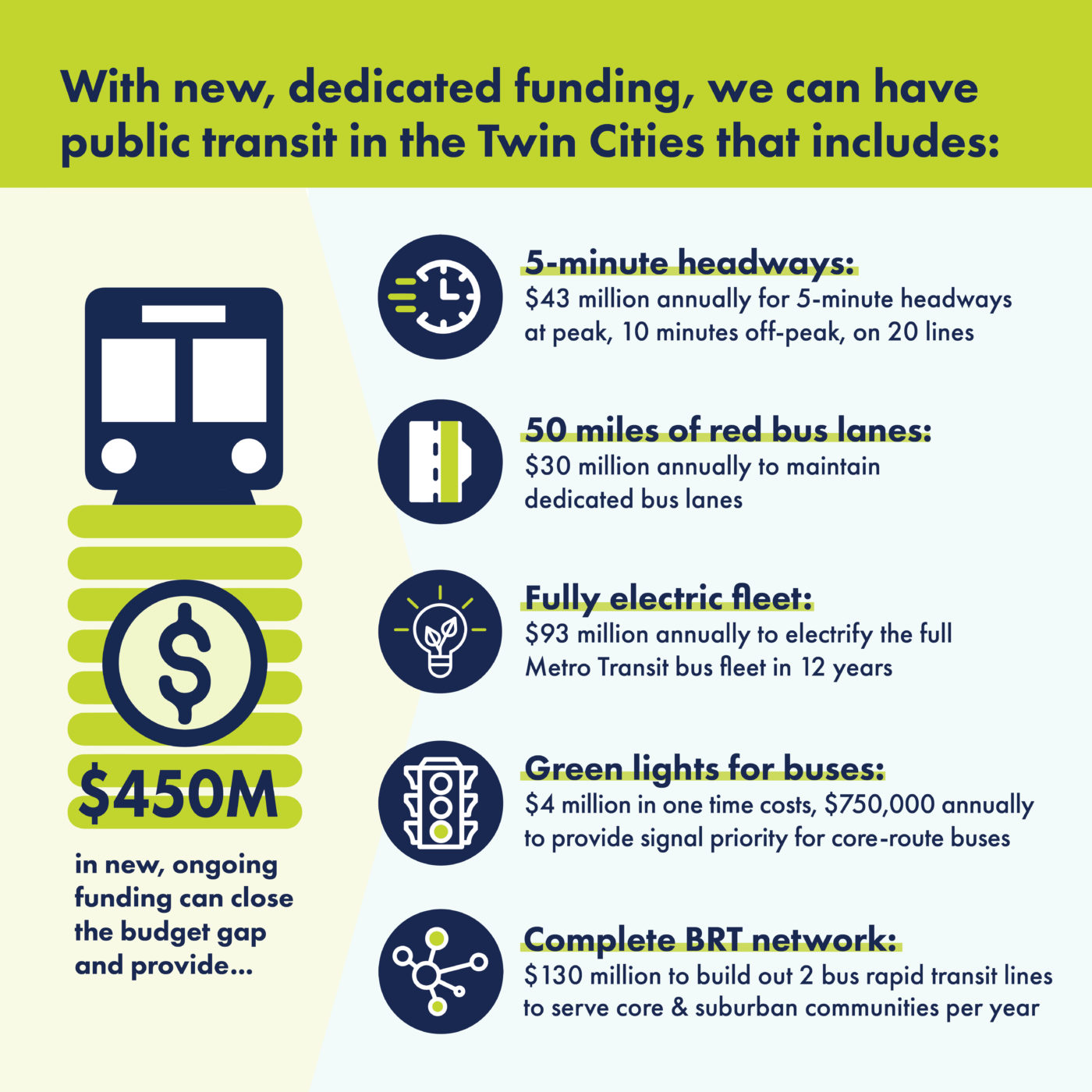
2. Quantify the economic, health, and climate benefits that can be expected from this investment
Improving public transit improves the lives of everyone in the region. In this report, we share data that illustrates how a world-class transit system can increase choice and freedom for Minnesotans who want to drive less; reduce household costs from the ever-growing financial burden of car ownership; free up time spent in transit that can be redirected to our families and communities; improve our public health and address racial inequities; and protect our climate by making it possible to drive less.
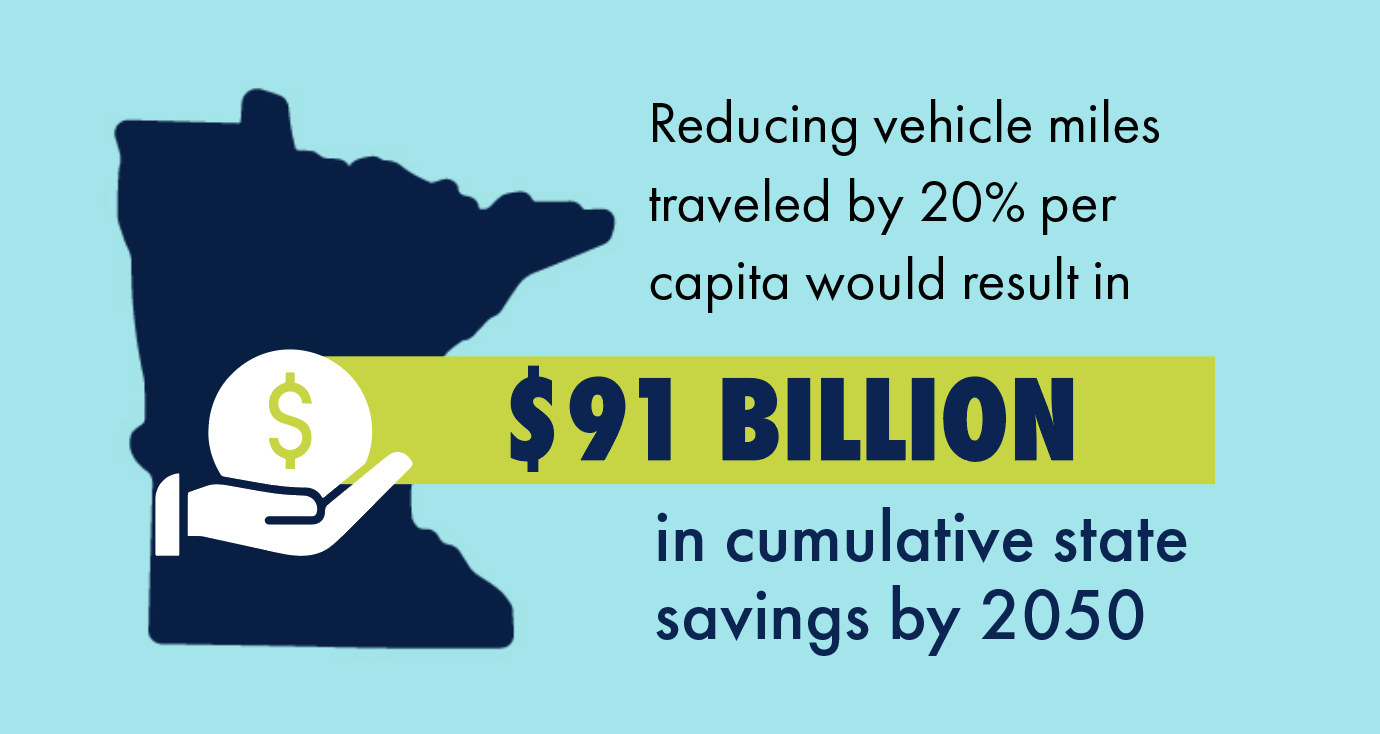
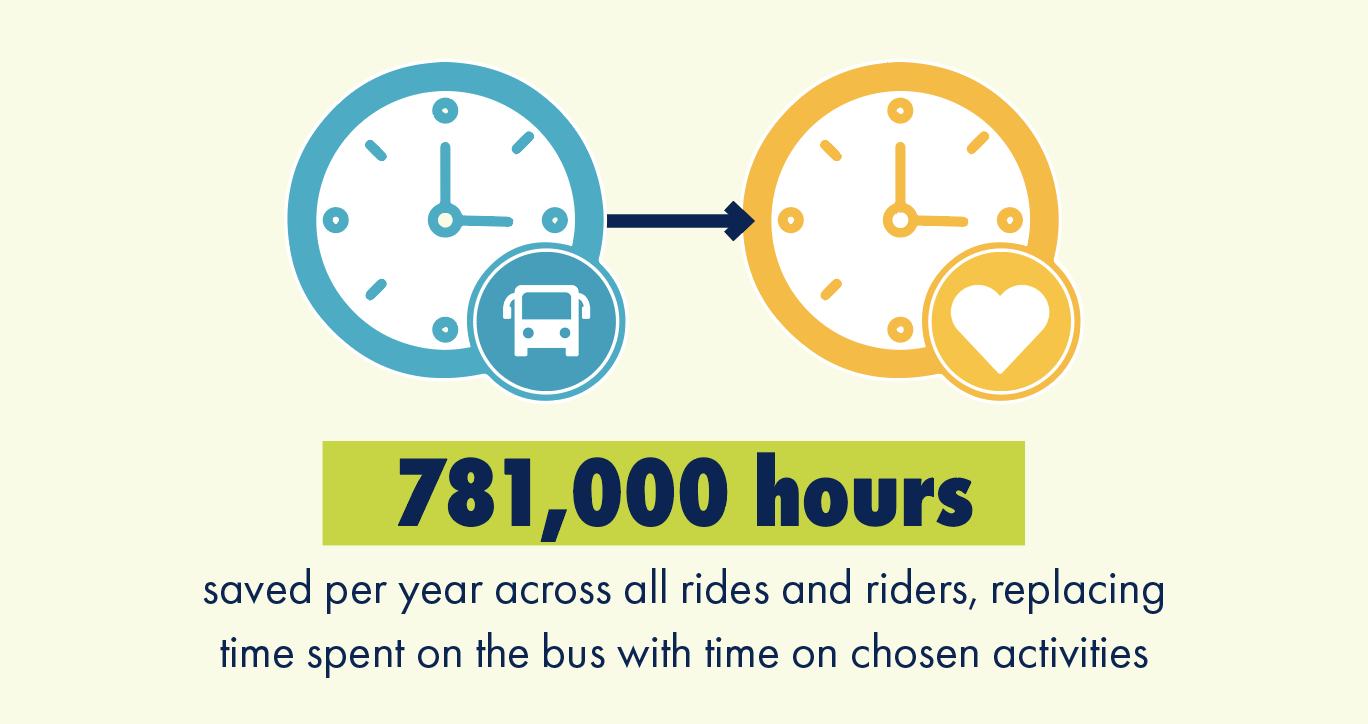
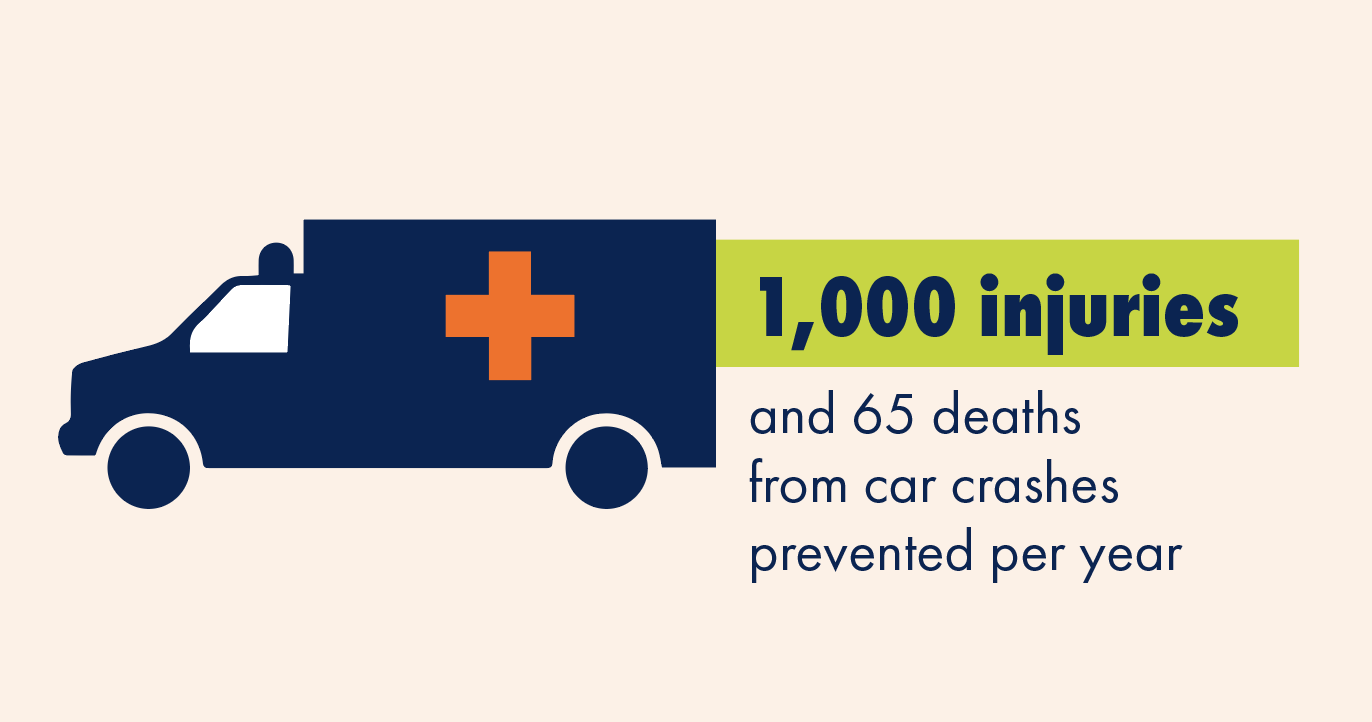
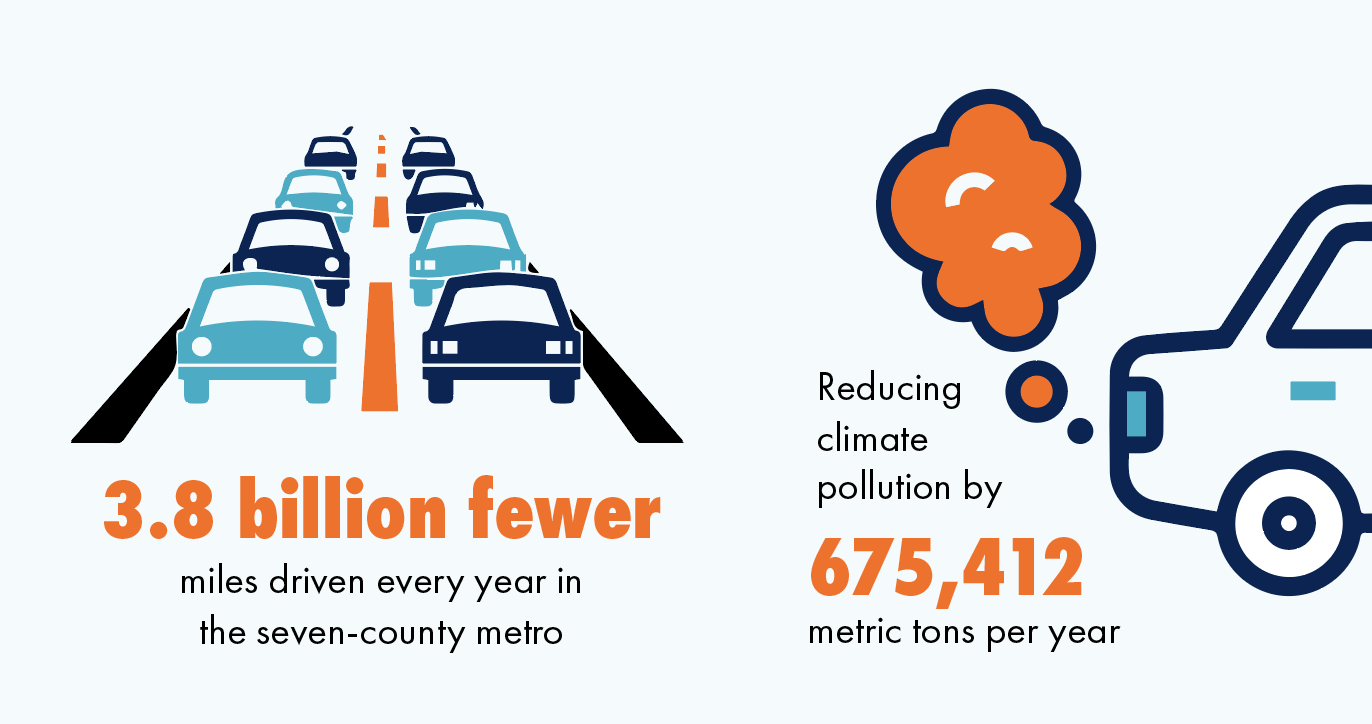
See all the benefits in the full report!
3. Share recommendations to quickly and effectively leverage this opportunity for transformation
Begin investments now: Many short-term investments can make a big difference quickly, benefitting current riders. With interventions like bus lanes and signal priority, transit speeds could increase dramatically in the near-term.
Plan and build transit to grow ridership: Minnesota needs to reach its vehicle miles traveled (VMT) reduction targets to deliver health, climate, and economic benefits. To do this, transit ridership needs to increase.
Increase the frequency of major capital investments: Historically, the region has built one bus rapid transit line at a time and one rail line at a time. We have the funds to allow investments in multiple new capital projects each year—critical for our climate, health, and economy.
Ultimately, this isn’t about transit or new policy ideas—it’s about the difference this will make in peoples’ lives now and into the future. It’s about people not having to shoulder the financial and climate burden of owning a car to see friends or go to the store. It’s about giving folks a faster trip home so that they can spend time with their kids—and it’s about delivering a more stable climate for those kids.
Sam Rockwell
Executive Director, Move Minnesota & Move Minnesota Action
Right now, we have a tremendous opportunity to put Minnesota on a different path.
In addition to the metro sales tax, new funding will flow to Greater Minnesota transit, to new statewide biking, walking, and rolling investments, and to new intercity rail initiatives here in Minnesota. And new state resources will combine with significant new funding in the federal Infrastructure Investment and Jobs Act to support local, state, and federal climate and equity initiatives.
Delivering on this opportunity will require visionary leadership. At every level of government, our elected officials and decision-makers have both the opportunity and the responsibility to make sure the potential of this transformative new funding is realized in our streets, in our communities, and on our buses and trains.
Together, we must continue to push for a sustainable, equitable future and hold our leaders accountable for the transit transformation we all need and deserve.
Note: This report has been updated to correct a typo on page 6 related to time savings.

